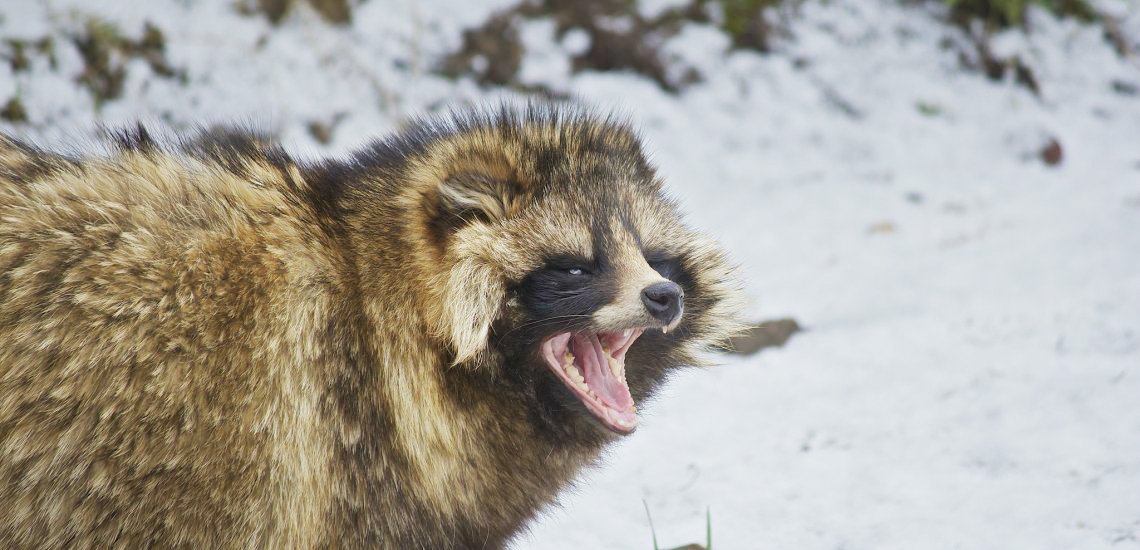
We are not alone – alien plants & animals invade Europe
As of today, leading European experts will gather for three days of intensive discussion in Luxembourg to assess the spread of alien lifeforms among us. Top of the agenda will be an updated appraisal of the current alien invasion risk and a resolution outlining high priority security measures – biosecurity measures that is. For the menace tackled at the NEOBIOTA International Conference[1] comes not from Outer Space, but flora and fauna non-native to the EU.
We Are Not Alone. The consortium of scientists and environmental managers that form NEOBIOTA (the European Group on Biological Invasions) warn that the EU harbors up to 1800 different IAS (Invasive Alien Species) along with their rapidly growing populations: from the pesky South American coypu (Myocastor coypus) troubling Germany and the incorrigible North American grey squirrel (Sciurus carolinensis) infesting Italy to the burrowing Chinese mitten crab (Eriocheir sinensis) that has aggressively spread from the Kowloon Peninsula to the banks of the Thames.
But if these aliens seem less menacing than flying saucers and little green men, think again. In many cases, their negative consequences are harshly felt in at least three areas of major concern for European citizens today – the economy, human health and the environment.
As rude disruptors of local ecosystems, invasive species are one of the four great drivers of extinction (along with habitat change, over-exploitation and pollution). Alarmingly, they have been an essential factor in most bird extinctions over the past century and they contribute to the current plight of 44% of the IUCN’s Red List of critically endangered species. Many carry a Molotov cocktail of diseases with severe implications for native wildlife, livestock, domestic pets and, in some cases, humans. The European Commission estimates that invasions of alien species cause at least €12.5 billion worth of damage to the union’s economy annually.[2]
Nature knows no borders: the failure of any one Member State to tackle IAS puts our shared ecological homeland at risk. A solution has to be found at a pan-European level – after all, it makes sense that a common market needs common biosecurity. Fortunately, the EU – eager to meet its popular biodiversity targets by 2020 – has committed itself to supranational action. The recent launch in July of its list of 37 ‘Invasive Alien Species of Union Concern’ was enthusiastically welcomed.[3]
And none too soon. As researchers from the University of Turin will tell NEOBIOTA 2016, one of the list’s most notorious species, the yellow-legged hornet (Vespa velutina) – dubbed the ‘Asian killer hornet’ following several human fatalities – is rapidly spreading.[4]Since first docking in France in 2004 – a trade stowaway on ceramic pottery imports from southeast Asia – this venomous visitor has spread to neighboring Spain, Portugal, Germany and, more recently, Italy.
The Turin study hammers home the timely nature of recent EU regulations regarding invasion pathways and restrictions on the keeping, importing, selling and breeding of the black list ‘37’. However, as good as the laws are, they urgently need to be extended to cover many more, equally threatening species. NEOBIOTA is expected to call on the European Commission to add literally hundreds more than just the proposed additional 17 species to the list in 2017, though some contenders may prove too controversial.
In the case of the raccoon dog (Nyctereutes procyonoides), an increasingly popular exotic pet, cuteness is the enemy of reason. The species, as research recently published in PLOS One urgently reminds us, is one of the main vectors of rabies in Europe.[5] Yet, it has been allowed to continue its rampant march across the continent unabated. Its adaptability, reproduction rates and lack of natural predators have multiplied its numbers and if left unchecked, it is likely to become one of the most numerous, widespread and disease-ridden predators in Europe. If the ecological threat posed by the raccoon dog to endangered native species is not enough motivation to put it on the updated IAS list, then the EU should at the very least recognize that it’s all ‘fun, fur and games’ till someone gets lock-jaw.
Climate change, NEOBIOTA warns, will dramatically increase the negative impacts of raccoon dog invasions and those of other alien species. The time for action is now. With both nature and people at risk, the EU would be wise to listen. As the saying goes, ‘Once bitten, twice shy.’
Source: Gui-Xi Young, Birdlife Europe
View the NEOBIOTA RESOLUTION ON THE EU INVASIVE ALIEN SPECIES REGULATION: The Time for Action is NOW!
http://www.neobiota2016.org/resolution-neobiota-2016.pdf
[1] http://www.neobiota2016.org/
[2] Kettunen M, Genovesi P, Gollasch S, Pagad S, Starfinger U, Ten Brink P and Shine C (2008), Technical support to EU strategy on invasive species (IAS) – Assessment of the impacts of IAS in Europe and the EU (final module report for the European Commission). Institute for European Environmental Policy (IEEP), Brussels, Belgium. 44 pp. + Annexes.
[3] http://ec.europa.eu/environment/pdf/13_07_2016_news_en.pdf
[4] Bertolino S, Lioy S, Laurino D, Manino A, Porporato M, et al. (2016) Spread of the invasive yellow-legged hornet Vespa velutina (Hymenoptera: Vespidae) in Italy. The Japanese Society of Applied Entomology and Zoology. DOI 10.1007/s13355-016-0435-2
[5] Drygala F, Korablev N, Ansorge H, Fickel J, Isomursu M, Elmeros M, et al. (2016) Homogenous Population Genetic Sructure of the Non-Native Raccoon Dog (Nyctereutes procyonoides) in Europe as a Result of Rapid Population Expansion. PLoS ONE 11(4): e0153098. DOI:10.1371/journal. pone.0153098